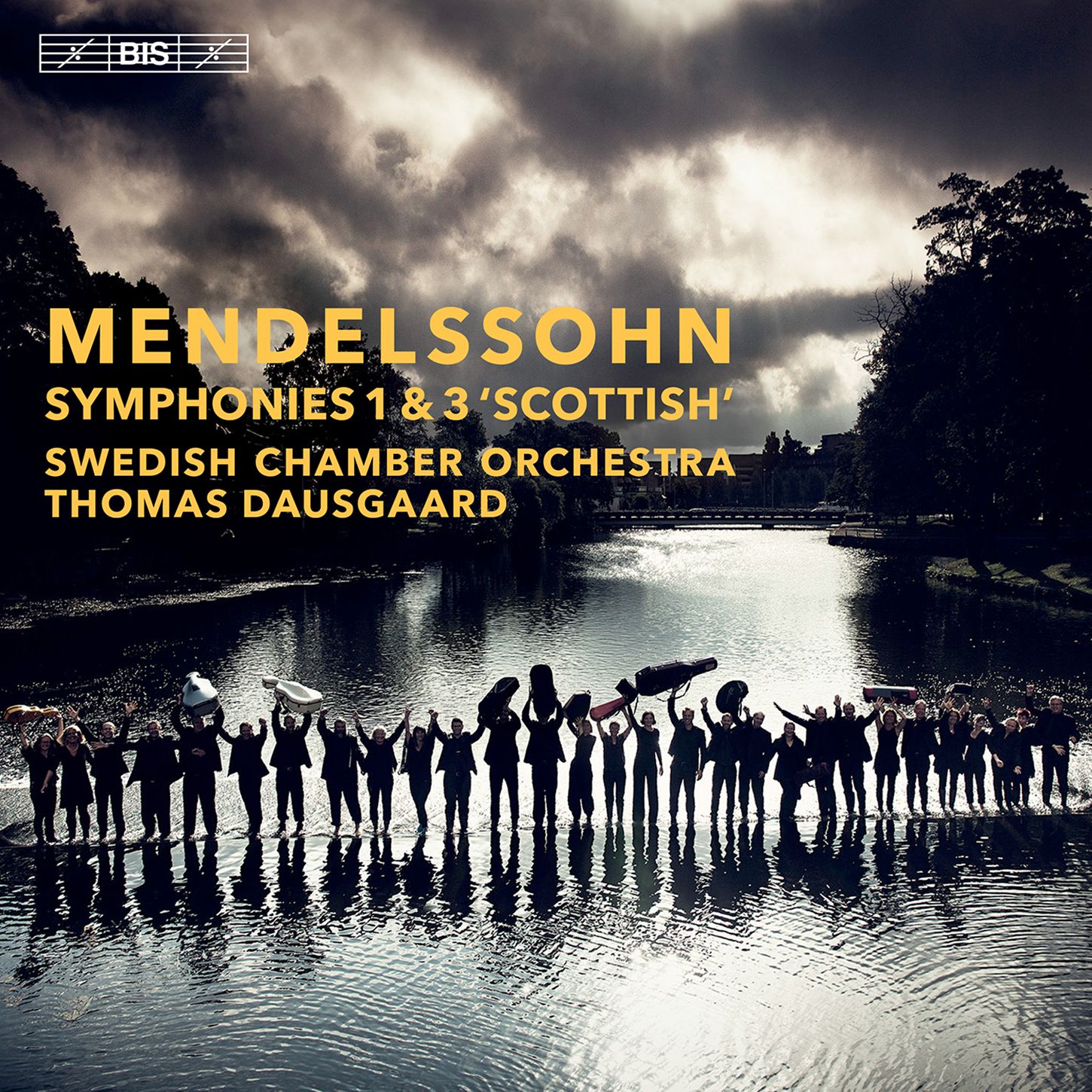Mendelssohn Symphonies from Sweden
If you don't know Mendelssohn's early numbered symphonies yet, this is the perfect place to start: I can hardly wait until No. 2 ("Lobgesang") is released!

Mendelssohn is best known for his Symphonies Nos. 3 and 4, but as the booklet notes to this release point out, his Symphony No. 1 was actially his "Symphony XIII" - he had composed twelve string symphonies previously and, initially at least considered what we know now as his First Symphony as a contnuation of them.
But this is a much larger piece, and right from the off it means business, its C minor key worn proudly on its sleeve. There's no slow introduction, it's straight into an Allegro di molto. Although a chamber orchestra, the Swedish CO captures all the sweep and power ofthis music:
We can hear here also the results of the collaboration (begin in 1997) between the Swedish Chamber Orchestra and its conductor laureate Thomas Dausgaard. They have already performed cycles of the symphonies of Schumann, Schubert and, most recently, Brahms: we met their Brahms Sympphony No. 4 in this previous post.
Structurally, that first movement is interesting as Mendelssohn shortens the development section but (as Beethoven sometimes did) treats the coda almost as a second deve,opment section. The lean and lithe textures and rhythms of this Swedish performance suits the music perfectly; and that very transparency also benefits the pastoral idyll that is the Andante. Some terrific woodwind playing here, too, all caught in crystal clear SACD sound:
The booklet notes are right to point out an affinity between the third movement and that of Mozart's Symphony No. 40 in G minor, K 550. However, Mendelssohn marks it as a "Minuetto," but there is more than a whiff of a Beethovenian Scherzo here, complete with maximal contrast to the trio:
The Allegro con fuoco finale balances the first movement, and so brings a lovely sense of satisfying completion to the work (and how close the opening resembles the finale of MOzart's 40th!). This movement seems to have it all: the imagination of the string pizzicato section (starts around 1'25) that morphs into the background for a suave calrinet melody, power in its big-boned statements, even a beautifully written fugue. If you don't know Mendelssohn's early numbered symphonies yet, this is the perfect place to start: I can hardly wait until No. 2 ("Lobgesang") is released!
The Scottish CO under Dausgaard previously recorded the incidental music to A Midsummer Night’s Dream on a disc that included the Hebrides Overture, which makes a nice link to the "Scottish" Stmphony. So let's hear that very performance as a rather nice interlude:
Scotland's beautiful and rugged scenery was the inspiration for Mendelssohn's Third Symphony. It's often considered a big-boned piece, but Dausgaard persuades us that once can have just as much power and tension with smaller forces and greater transparency to boot. It was a visit to Holyrood Palace in Edinburgh that inspired the work's opening, but it took him over ten years to finish the piece. Here's what teh composer wrote in a letter to his parents dated July 30, 1829:
In the dusk we went today to the palace where Mary Stuart lived and loved... The chapel... is now without a roof; grass and ivy are growing there in abundance; and at the ruined altar Mary was crowned Queen of Scotland. Everything there lies rotten and in ruins; the clear daylight shines right in. I think that today I found the beginning of my ‘Scottish’ Symphony.
First performed in 1842, the "Scottish" Symphony retains a firm polace in every music-lover's heart and it's easy to hear why:
While travelling to Italy found that country's sunshine temporarily sweeping away gloomy Scotish gray skies, Mendelssohn finished the score in 1842 - so it is technically his last symphony! (it was published byfore the "Italian," hence No. 3). Certainly there's no missing the storm invocations in ths performance above.
The Scherzo (Vivace non troppo) is a rip-roaring experience here. The movement particularly impressed one Robert Schumann, and it's easy to hear why. Its typical Mendelssohn in its lightness, while including the "Scottish snap" rhythm prominantly:
It is the third movement that is arguably Dausgaard's finest achievement -the "fineral march" element takes on huge power here, the transparency of the orchestra allowing for no bombast whatsoever.
The finale finds wings where many fail to take off. The final peropration thus takes on even more of a sense of import:
I had a block about the third for many years, finding the "Italian" a finer piece. If only this performance had been around to change my mind! This is absolutely terrific Mendelssohn, cased in a demonstration-standard recording from Producer Ingo Petry and Engineer Bastian Schick.
